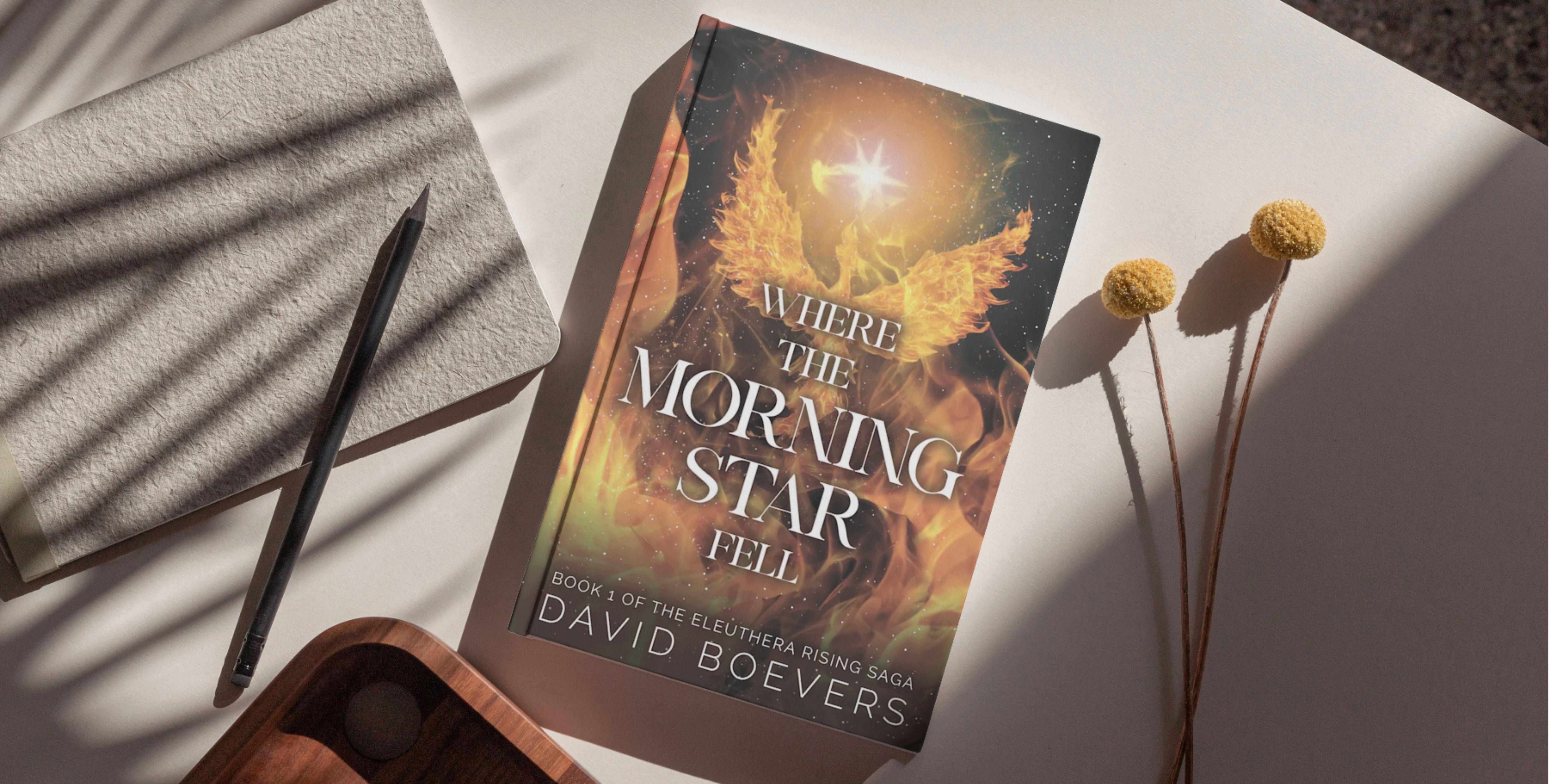Seeing the Story: How Frustration Sparked a Revolution in Revision
This is part one of a two-part interview with Will Frasier, founder of Story Stream. Check out Part Two here.

Q: What inspired you to create Story Stream?
A: It started with my own frustration, honestly. I was working on a novel and feeling stuck in the revision process. I had this draft that I knew had potential, but I couldn't see the forest for the trees. I'd get feedback like "the pacing is off" or "the character motivations aren't clear," but translating that into specific changes was overwhelming.
I tried using AI tools like ChatGPT, but they weren't built for understanding narrative. They'd give me generic writing advice or try to rewrite my work in their voice. What I needed was something that could see the patterns in my story and help me understand what was working and what wasn't.
That's when I realized there was this gap between what writers need and what existing tools provide. Most writing tools focus on grammar, style, or generating content. But the hardest part of writing isn't getting words on the page—it's shaping those words into a compelling story. That's the problem I wanted to solve.
Q: What was the biggest challenge in building an AI editor that actually understands narrative?
A: The biggest challenge was teaching AI to think about stories the way humans do. Most AI systems are trained on massive datasets to predict the next word or sentence, but they don't inherently understand concepts like character arcs, thematic resonance, or emotional payoffs.
We had to build systems that could recognize patterns across an entire manuscript—not just at the sentence level, but at the scene, chapter, and story level. For example, understanding that a character's decision in chapter ten needs to be set up by their experiences in chapters three and seven.
We also had to solve the problem of subjectivity. What makes a story "good" isn't objective—it depends on genre conventions, reader expectations, and the author's intentions. So we designed Story Stream to adapt to the writer's goals rather than imposing a one-size-fits-all standard of "good writing."
Perhaps most importantly, we had to build something that would augment rather than replace the writer's judgment. The goal was never to have AI tell writers what to do, but to help them see their work more clearly so they could make better decisions.
Q: What makes Story Stream different from other AI writing tools on the market?
A: Three things set us apart: our focus on developmental editing rather than line editing or content generation, our emphasis on understanding narrative structure, and our commitment to preserving the writer's voice and vision.
Most AI writing tools are focused on helping you generate content or polish your prose. They're great at suggesting synonyms or fixing grammar, but they don't help you with the big-picture questions that make or break a story. Story Stream is built specifically for developmental editing—helping you see and strengthen the underlying structure of your narrative.
We've also built systems that understand how stories work across different genres and formats. Our AI can recognize common narrative patterns and help you see how your story aligns with or deviates from reader expectations. This isn't about forcing your story into a formula—it's about giving you insight into how readers might experience your work.
Finally, we're committed to preserving what makes your writing unique. We don't try to rewrite your work or homogenize your voice. Instead, we help you identify opportunities to strengthen what's already there. The goal is to help you become a better version of yourself as a writer, not to make everyone sound the same.
Q: How does Story Stream actually work? What happens when a writer uploads their manuscript?
A: When you upload your manuscript, Story Stream first analyzes it at multiple levels—from individual sentences up to the overall narrative arc. We look at elements like character development, plot structure, pacing, thematic consistency, and emotional resonance.
Before we even start the analysis, we ask you a few questions about your story and your goals. This helps us tailor our feedback to what you're trying to achieve. For example, if you're writing a thriller, we'll pay special attention to tension and pacing. If you're writing literary fiction, we might focus more on character development and thematic depth.
Once the analysis is complete, you get a dashboard with insights about your manuscript. You can see an overview of your story's structure, character arcs, and thematic elements. You can also dive deeper into specific scenes or chapters to see how they contribute to the overall narrative.
For each insight, we provide specific examples from your text and actionable suggestions for how you might strengthen that aspect of your story. These aren't prescriptive commands—they're thoughtful observations designed to spark your own creativity and help you see new possibilities in your work.
Q: What's your vision for the future of Story Stream?
A: Our vision is to create a world where every writer has access to the kind of thoughtful, developmental feedback that has traditionally been available only to those who could afford professional editors or had connections in the publishing industry.
In the near term, we're focused on refining our core analysis capabilities and making our insights even more actionable. We're also working on features that will help writers track their progress through multiple drafts and see how their story evolves over time.
Looking further ahead, we want to build a community around Story Stream where writers can connect with each other and with professional editors. We see AI as a powerful tool, but we don't believe it will ever replace human connection and collaboration. Our goal is to use AI to enhance and facilitate those connections, not replace them.
Ultimately, we want Story Stream to be a partner in the creative process—a tool that helps writers bring their unique vision to life and connect more deeply with their readers. We believe that stories have the power to change how we see the world, and we want to help more of those stories reach their full potential.
Q: What advice would you give to writers who are hesitant about using AI tools in their creative process?
A: I completely understand the hesitation. There's a lot of hype and fear around AI in creative fields right now, and some of that concern is valid. But I'd encourage writers to think of AI as a tool, not a replacement for human creativity.
The best AI tools should amplify your voice, not replace it. They should help you see your work more clearly and make better creative decisions, not make those decisions for you. If an AI tool is trying to take over your creative process or homogenize your voice, that's a red flag.
I'd also encourage writers to be clear about what problem they're trying to solve. Different tools are designed for different purposes. Story Stream is built specifically for developmental editing—helping you see and strengthen the underlying structure of your narrative. It's not meant to generate content or polish your prose, and it's certainly not meant to write your story for you.
Finally, remember that all tools—whether they're AI-powered or not—are just that: tools. They're means to an end, not the end itself. The goal is still to create a story that resonates with readers, and no tool can do that for you. What tools can do is help you see your work more clearly and make better creative decisions along the way.
Explore the Story Stream editing platform
Try the tool that turns thoughtful edits into powerful storytelling
More from the Blog

Interview with David Boevers, Author of Where the Morning Star Fell
Sci-fi author and educator David Boevers shares how Story Stream helps him revise with precision, purpose, and limited writing time. Discover his process, his Eleuthera universe, and how the Chapter Analyzer keeps his revisions on track.

7 Myths About First Drafts That Are Holding You Back
Let go of perfectionism and embrace the messy truth of first drafts. Discover the 7 common myths that keep writers stuck—and the truths that set you free to create boldly, imperfectly, and authentically.

Meet Jessica James: A Story Stream Success Story
Award-winning author Jessica James shares how Story Stream helped her deepen a dual-era historical mystery, uncover fresh ideas, and return to her creative rhythm.

Tension to Twist: Writing Thrillers That Stay With Readers
Build suspense that lingers after the last page with tension, atmosphere, and grounded stakes your readers can feel.

The Shadow That Shapes the Light: Writing Unforgettable Villains
From archetypes to emotional stakes, explore how to craft villains who pressure protagonists, deepen theme, and keep readers turning pages.

From Meet-Cutes to Magic: Crafting HEAs That Truly Land
A practical guide to crafting romance that earns its HEA, balancing authentic chemistry, meaningful conflict, and a satisfying payoff—plus how Story Stream helps you get there.